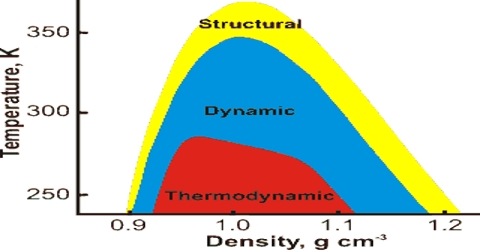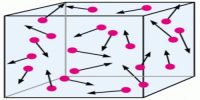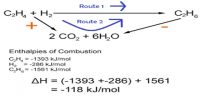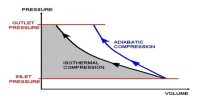Abnormal Densities of Gases: Molecular Association and Dissociation
Density defined in a qualitative manner as the measure of the relative “heaviness” of objects with a constant volume. The density of gases depends upon the temperature. For gases, the density may vary with the number of gas molecules in a constant volume. Measurements of densities of vapors have served to determine the molecular masses of a great many substances. In most cases, the results are in agreement with the values obtained from the sum of the atomic masses of elements in the molecular formula. A few cases were, however, found where the molecular masses as determined from vapor density seemed abnormal. These abnormal values were attributed to the association or dissociation of the molecules in the vapor state.
The density of a gas with a constant number of molecules in a constant volume varies according to the molecular weight. The higher the molecular weight the higher the density. High pressure means high density, cooler, sinking air. Low pressure means low density, warmer, rising air. The same concept helps to explain the weather resulting in high and low pressures. High pressure means high density, cooler, sinking air. Low pressure means low density, warmer, rising air.
For gases:
- An increase in pressure leads to a decrease in volume and an increase in density.
- A decrease in pressure leads to an increase in volume and a decrease in density.
Two types of Abnormal Densities of Gases:
- Molecular Association: The formation of double molecules or poly-molecules from a single species as a result of specific and moderately strong intermolecular forces.
- Molecular Dissociation: Dissociation is a general process in which molecules separate or split into smaller particles such as atoms, ions, or radicals, usually in a reversible manner.
Example: In this case, the carbon dioxide produced by the vinegar and baking soda reaction sinks to the bottom of the beaker. In the process, the air which is less dense is pushed up and out of the beaker. As the oxygen in the air is pushed out of the beaker by the denser carbon dioxide, the candles go out one by one.
Density is a physical property of matter and is defined as the mass of the object divided by volume. Remember that mass is the measure of the amount of matter in an object and is measured in grams. In solids, density remains mostly constant because the subatomic bonds keep the molecules tightly packed. However, in gases, the bonds are much weaker, which makes them responsive to temperature and pressure. Gases will assume the shape of whatever container they are in.
















